Marine Fauna in the depths of Lanzarote
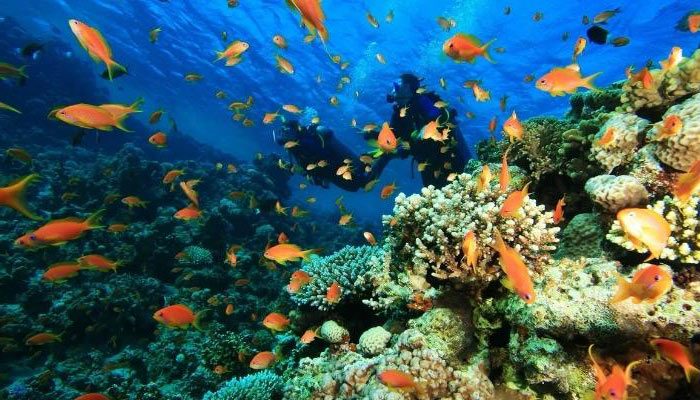
Diving in Lanzarote allows us to meet the most fascinating marine species in its depths, but which ones exactly? can you see dolphins in Lanzarote? what are the most popular fish that inhabit its waters?
We will answer all these questions in our post. At Titan Blue Divers we are passionate about the wonders of the sea and we want to share with you everything you will enjoy in your next underwater adventure... Are you ready? Let's get to it!
Marine fauna of Lanzarote
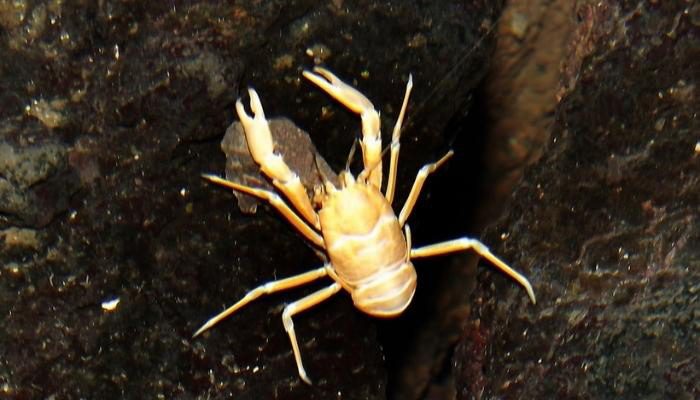
In recent years, new marine species have been found in the depths of Lanzarote, so surprising that they have caught the attention of the scientific community.
Even the Marine Reserve to the north of Lanzarote represents an amazing maritime space, being one of the most captivating in all the marine fauna of the Canary Islands.
This protected area (which includes the island of La Graciosa and the islets of Alegranza, Roque del Este, Roque del Oeste and Montaña Clara) allows the conservation of the species that inhabit it through the regulation of recreational and fishing activities.
In fact, in La Graciosa we can find the highest concentration of gerardias in the world, which is only a small part of the great biodiversity that the island of Lanzarote has to offer.
All those species that live in these waters are able to withstand the great depths, variable temperatures and local currents.
📌 Interesting fact : The albino and blind crab (also known as jameito) can only be found on the island of Lanzarote. It can be found in underwater caves and volcanic tubes and is even a natural symbol of the island!
To find out what awaits you on your next dive on the island of Lanzarote, we are going to divide the marine fauna into vertebrates and invertebrates. Get ready to be amazed!
Invertebrate species in Lanzarote
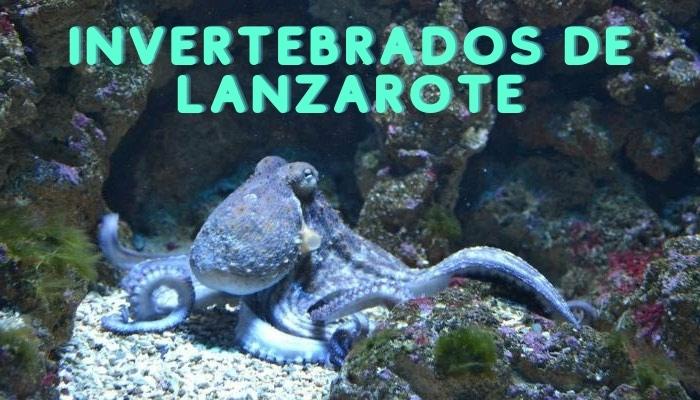
The invertebrates that can be found in Lanzarote's marine depths are most fascinating. They stand out for their peculiar and surprising body structures.
Although there are many specimens, on your underwater adventure you are more likely to encounter:
- Limpets and mussels: These are molluscs with shells that can often be seen on rocks. Among the most popular are the black and white limpets.
- Lobsters and shrimps: They belong to the group of arthropods. The creole lobster is possibly the most representative of this group, and can be distinguished by its short, flattened antennae. They only have claws on their front legs.
To find them while diving we would have to dive around 40 metres(they can normally be seen at less than 100 metres), frequenting rocky bottoms. Shrimps can be similar to lobsters, although they have claws on three pairs of legs. In addition, they can usually be found from 300 metres onwards, making them a little more difficult to see.
- Other invertebrates: When diving we can also see other well knowninvertebrates such as starfish, octopuses, anemones, fire worms, cuttlefish, comatulas, gorgonians and sea urchins.
Marine Fauna in Lanzarote
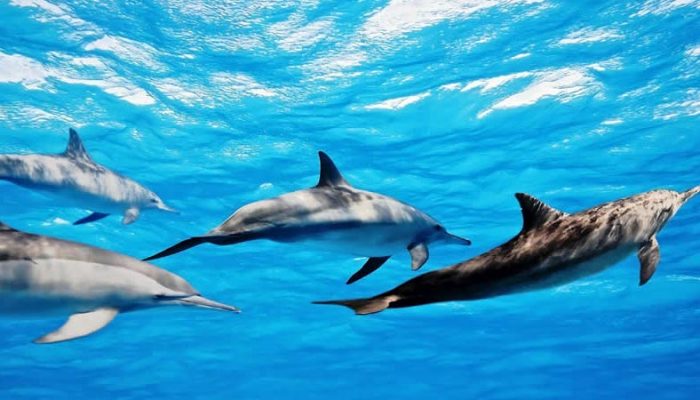
There are many vertebrates that we can find while diving on the island of Lanzarote. Although they differ in size and shape, they can all surprise and delight us with their beauty. Get to know them now:
- Angelsharks, hammerheads, dogfish, catsharks and some relatives: Although angelsharks and hammerheads are two shark species with marked differences, both are quite common in Lanzarote's marine fauna. Firstly, the hammerhead shark is distinguished by its larger size, while the angel shark is usually smaller and can be found closer to the coast, especially on sandy bottoms. We can also find dogfish and catsharks. It is even possible to see shark relatives such as manta rays that live in the open sea or ray fish known as "chuchos", which are usually found on sandy bottoms.
- Cetaceans: Generally, to see dolphins in Lanzarote we can find them in the surroundings of the island, close to the coast, although they are somewhat difficult to spot, on the other hand, there are species of the same group such as sperm whales and killer whales that are even more difficult to see. However, there are approximately 29 recorded species of cetaceans, including beaked whales, pilot whales and fin whales.
- Loggerhead turtle (Caretta Caretta ): It can be distinguished because the upper part of its shell and head has a colour that can vary from reddish-brown to orangey-yellow.
It can be found in areas close to the coast, although sightings are not very frequent. It is an endangered species that must be cared for more than ever in order to continue appreciating its beauty.
- Fish: In Lanzarote we can find a wide variety of fish and among the most popular are parrot fish, lizard fish, mullet, conger eel and grouper.
Other of the most common fish in Lanzarote are tuna, horse mackerel, moray eel and barracuda.
Tips to make the most of Lanzarote's marine fauna on your dives

At the bottom of the sea we can live unforgettable experiences that teach us great things about our wonderful planet. But at the same time as we enjoy the incredible surprises of nature, we must learn to take care of it and value it.
From Titan Blue Divers we always promote responsible diving in our amazing island of Lanzarote and in any other marine area.
That's why we want to share with you 8 fundamental tips to make all your dives fascinating and environmentally friendly:
- The protection you offer to underwater life is crucial. Therefore, avoid touching, handling, feeding or chasing any organism.
- Avoid swimming too close to the seabed as much as possible, as the fins you use can pick up sediment and cause damage to living creatures.
- Make sure your only waste is the bubbles, so no dumping waste into the sea, as this can damage marine habitats and be lethal to biodiversity.
- Never extract any living being or material from the sea. Don't forget that your best memories will be the experiences, images and sensations of being in a balanced place without alterations in its elements.
- Always try to dive with people, professionals and centres that are committed and respectful of the environment and the law.
- Always avoid moving bottom features or lifting stones. These can serve as shelters or lairs for many living creatures, whose survival depends on them being able to remain hidden.
- Outreach and conservation actions also make a difference. Therefore, try to collaborate in these activities, because the conservation of the oceans depends on our actions.
- If you dive in a sebadal, never pull up the sebas, as they form a very fragile space. Moreover, they are not common algae, but phanerogamous plants that function as "nurseries" for numerous invertebrates and fish.
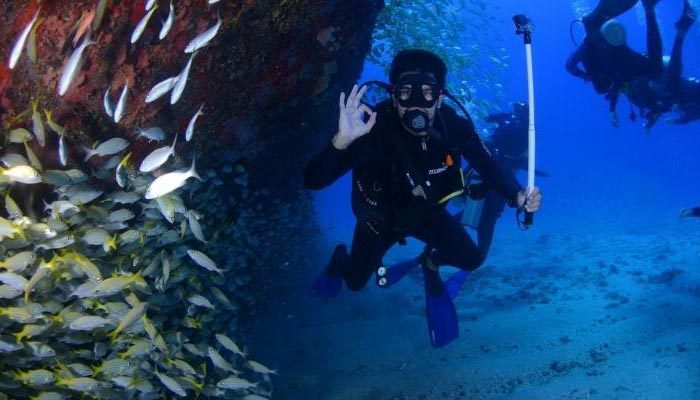
Finally, remember to help enforce the rules by knowing and respecting them. Even try to warn those who do not comply with them.
Don't forget that responsible diving guarantees you unique experiences, as you will be able to interact with the fascinating and unusual nature that is so interesting to us.
If you have any questions or would like to share something with us, we look forward to hearing from you in the comments. If you have a more specific question, you can contact us directly.
At Titan Blue Divers we are ready to offer you the most incredible diving experience on the island of Lanzarote.
